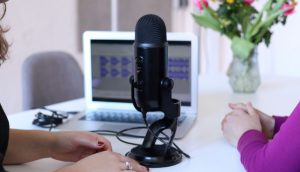BBM Canada has committed Canada to Arbitron/TNS Media Reseach’s new Portable People Meter technology in a big way. After serving on the committee that selected Arbitron/TNS Media Research, I think this is an important step in the evolution of audience measurement in this country.
The current patchwork quilt of measurement technology – which includes diary, set-top meters of various types and the Portable People Meters being tested in Montreal – will soon be simplified, and perhaps provide the potential to move towards a diary-less system some day.
There are some very clear and concrete advantages offered by the new PPM technology. It will be used to measure both TV and radio by the same single-source respondent. For the first time since single-source TV/radio diaries were used by BBM some 30 years ago, buyers and sellers will be able to determine how TV and radio plans and buys work together. Our industry will gain insight into how the two media produce combined, real, live reach/frequency.
And of equal importance, the costs to capture TV/radio audience data will be significantly reduced. That money can be used to add more metered markets, reduce member fees, or both.
The process that’s expected to bring all this about began back in June 2007, when BBM Canada issued a request for proposals. The special BBM RFP evaluation committee of which I was a member undertook an exhaustive review of formal bids from four international audience measurement companies last fall.
The committee was made up of 13 voters representing conventional TV, specialty TV and agencies from English Canada and Quebec. A score-card system captured our technological evaluations, as well as cost considerations, and the final vote clearly identified Arbitron/TNS Media Research as the top contender.
How does the PPM system we selected work? It utilizes a small, rechargeable monitoring pod that’s worn by BBM respondents. When an audio code (embedded in TV station and radio station signals) is detected, the wearer becomes an audience member and the unit captures the time of viewing/listening. When each pod is placed in its charging dock at night, the tuning information is downloaded to a central audience collection point.
The PPM is easy to use (with no buttons to push), easy to install and easy to monitor. There’s a built-in motion detector in the pod. If the respondent leaves the pod in its dock, BBM can place a call to determine why the unit isn’t being used. In this way, non-response (which is expensive and wasteful) can be dramatically reduced.
Our committee’s recommendation was approved in principle by BBM’s board of directors, and final approval is expected in June. If all goes well, PPM installation will begin in early 2009, with test audience data available in late spring. By September, Toronto, Vancouver, Calgary and National PPM service will be ready to go (in addition to existing service in Montreal and Quebec). And by that time, Edmonton will have PPM service for radio.
Rob Young is SVP, planning services at Toronto-based PHD Canada.






















